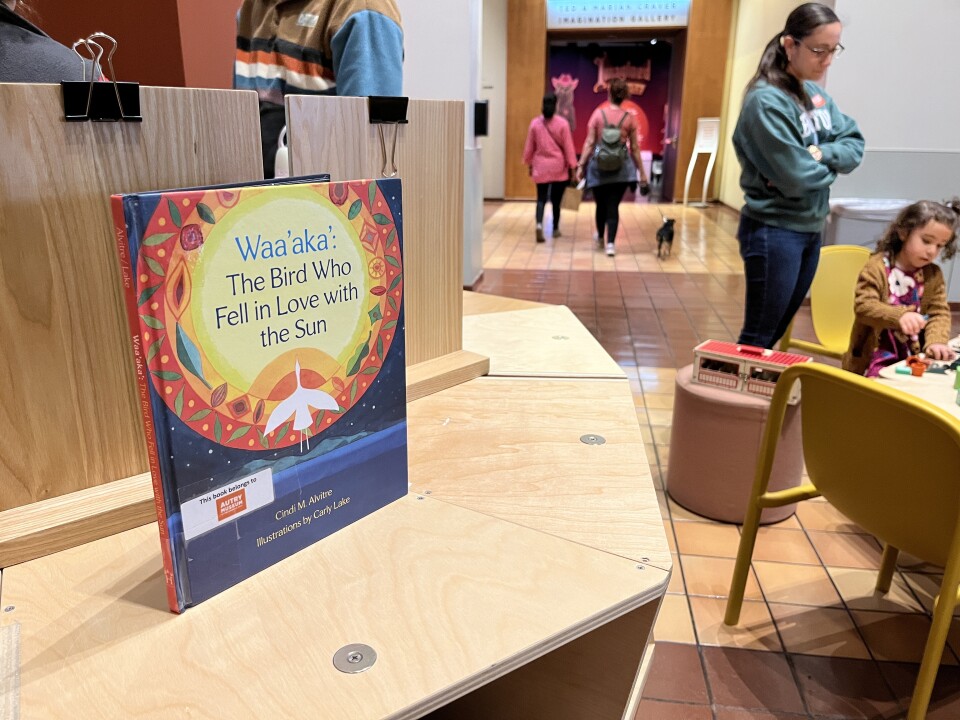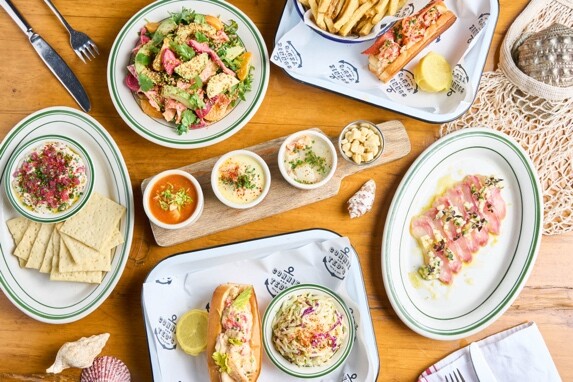Happy Wicked: For Good opening weekend to all who celebrate. You know where I’ll be. If you have been singing along since the trailer came out, head to Licorice Pizza for a Wicked: For Good soundtrack listening party on Saturday at 5 p.m. — there will even be giveaways!
Licorice Pizza also has music picks around town for the weekend, including Lucius at the Wiltern on Friday, Robert Plant at the United on Saturday, Goapele at the Blue Note and Brian Jonestown Massacre at the Teragram. Cerritos Center has a killer lineup of Todd Rundgren on Saturday and Al Jardine from the Beach Boys on Sunday, and the Dreamstate SoCal trance festival is happening in Long Beach all weekend long.
Elsewhere on LAist.com, you can check out our latest gift guides for local good fans, Larry Mantle superfans and plant parents.
Events
Saturday, November 22, 1 p.m. to 4 p.m.
Corita Day
Marciano Art Foundation
4357 Wilshire Blvd., Koreatown
COST: FREE, RESERVATION REQUIRED; MORE INFO
Pop artist and photographer Corita Kent died in 1986, but her powerful messages of social justice have perhaps never been clearer in Los Angeles history. An artist, nun and educator who later left the Catholic Church, Kent’s colorful prints gained attention during challenging moments in our past, from the 1960s civil rights movement to apartheid. This year marks the sixth annual Corita Day, which will be celebrated at Marciano Arts Foundation this Saturday, with some help from KCRW and other community organizations, including a performance from Bob Baker’s marionettes. You can explore the new Corita Kent: Sorcery of Images exhibit at the all-ages, free event, and also bring along your creativity for button making, screen printing and more ways to make inspiring, colorful art like Kent’s.
Saturday, November 22, 6:30 a.m. to Sunday, November 23, 5 p.m.
Annual Moby Dick Reading
Venice Beach
COST: FREE; MORE INFO
Ahoy! It’s already time for the annual reading of Herman Melville’s Moby Dick on the beach. I know I put this in every year, but it’s one of my favorite — and so uniquely Venice — events that mark the start of the California gray whale migration. After the rain this week, it should be brisk but sunny on the beach, so bring a blanket and sign up for your favorite chapter to read aloud.
Saturday, November 22, 9:30 a.m. to 3 p.m.
L.A. On Wheels Day
Natural History Museum
900 Exposition Blvd., Expo Park
COST: FREE WITH MUSEUM ADMISSION; MORE INFO
No matter what wheels you prefer — roller skates, skateboard, car, bike or even unicycle, L.A. on Wheels Day celebrates all forms of zippy transport at the Natural History Museum. The event includes live skate demos from pro skaters as well as — wait for it — Rowdy the Skate Dog, plus the LA Derby Dolls and LA Skate Hunnies. There’s also a chance to make art, listen to stories from the Drag Arts Lab and check out wheel-themed museum presentations.
Through Sunday, November 23
Split Rock Jumping Tour
Santa Anita Park
285 W Huntington Drive, Arcadia
COST: FROM $30; MORE INFO
Calling all horse people: The Split Rock Jumping Tour culminates after two weeks of horse show jumping at Santa Anita Park, which was recently named the official equestrian venue for the LA28 Olympic Games. Check out elite riders and horses, then head down to the racecourse for the big event — the Longines FEI Jumping World Cup — happening on Saturday.
Saturday, November 22, 10 a.m.
Venice Winter Fest
Venice Blvd., Mar Vista
COST: FREE; MORE INFO
Get your holiday shopping on the fun (and local!) way with 300+ local creators, designers and artists selling their wares You can also listen to live music curated by Breaking Sound, refuel with restaurants and food trucks, then work it all off at free classes from The Gym Venice. Take a stroll up Venice Blvd. and soak up the beachy holiday vibes.
Through November 22, 6 p.m. 10 p.m.
Lauren Tsai: The Dying World
Hollywood Forever
6000 Santa Monica Blvd., Hollywood
COST: FREE; MORE INFO
Halloween may be long over, but you still have a last chance to take an evening wander through Lauren Tsai’s haunting installation in Hollywood Forever Cemetery. Tsai uses drawing, painting, sculpture, stop-motion animation and puppets (created in collaboration with Andy Gent) to take visitors through a character — Astrid’s — world.
Through Sunday, November 23
Perspectives
Zena and Pauline Gatov Gallery
Alpert Jewish Community Center
3801 E. Willow Street, Long Beach
COST: FREE; MORE INFO
The Long Beach Modern Quilting Guild is putting on this exhibit at the Alpert JCC, featuring 32 modern quilts and fiber arts from members of the community. Quilting is an old tradition, but this group is committed to modern patterns from minimalist to intricate, and is preserving quilting as an art form. These aren’t your grandma’s quilts!
Viewing Pick
Saturday, November 22, 7:30 p.m.
Home Alone: A Nostalgic Night with Macaulay Culkin
Terrace Theater
300 E. Ocean Blvd #300, Long Beach
COST: FROM $68.35, MORE INFO
Kevin McCallister himself will be on hand for this special screening of holiday favorite Home Alone. The John Hughes classic is celebrating 35 years of being a fixture on our holiday screens big and small (which makes me want to do the classic scream). Following the film screening, Macaulay Culkin will share stories and memories from the making of the film.
Dine & Drink Deals
Sunday, November 23, 4 p.m. to 9 p.m.
Jikoni at Offhand
3008 Santa Monica Blvd., Santa Monica
COST: VARIES; MORE INFO
“Afri-Cali” dining concept Jikoni L.A. is popping up at Westside favorite Offhand Wine Bar for a special one-night-only event. The menu features previous bestsellers like short rib biryani, shrimp jollof arancini and karakara pie.
Saturday, November 22, 1 p.m.
Di Mart Grand Opening
21355 Sherman Way, Canoga Park
COST: FREE; MORE INFO
Caribbean grocer Di Mart is opening a new location in Canoga Park. Their first day will be celebrated with discounts for shoppers, a raffle and a ribbon-cutting with the Woodland Hills Chamber of Commerce.



























